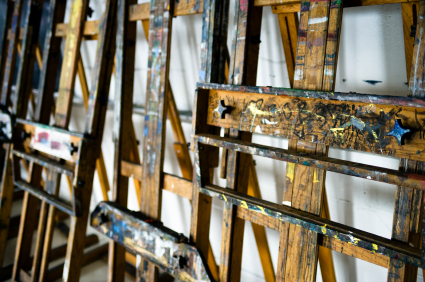Friday 25th March 2016Verona Heist Suspects Arrested

In a result that's at best only halfway to the goal line for police, 12 arrests have been made in one of the largest outstanding art thefts of the last decade. This all sounds like good news, of course, with the exception that none of the missing paintings have been found, and so far none of the suspects are talking.
The robbery took place last year on November 19th, as the armed thieves entered the Castelvecchio museum in Verona, Italy, and made off with 15 paintings from major names. According to the museum, the works were valued at over 15 million euros, and included works by a number of high profile artists including Portrait of a Lady by Peter Paul Rubens, Male Portrait by Tinteretto, and other less well-known works by Hans de Jode, Pisanello, Giovanni Francesco Caroto and Jacopo Bellini. A total of 11 of the stolen works are considered masterpieces by their creators.
The museum's working theory at the time was that the gang had been sent by a private collector to acquire the pieces, and that has yet to be proven or disproven, but it has since transpired that one of the guards who was on duty at the museum at the time was arrested among the suspects in the theft.
“It’s as if you broke into the Uffizi Galleries and stole a Botticelli. You couldn’t sell it on the open market. It’s certainly the most serious theft in the history of Italian art,” said art historian Tomaso Montanari.
Speaking right after the theft, the mayor of Verona summed up the theft: “Someone told them exactly what to steal and given that they are very well-known paintings, I imagine they will end up in a private collection."
“They were real professionals. They didn’t say a word to each other and they struck at exactly the right moment – after the museum had closed to the public but before the alarms had been activated.
“They tied up the guard and the cashier and grabbed the paintings. It was very targeted and deliberate. They went from room to room, knowing what to take.”
Telephone calls between the thieves right after the brazen theft were intercepted, as they were discussing the fact that they would have to wait several months to try to sell the paintings, but as of yet, almost 6 months later, the paintings still have yet to be recovered, and authorities have yet to discuss whether or not they have any active leads on the location of the missing works.
Posted on March 25th 2016 on 07:57pm
0 Comments
Thursday 06th February 2014Missing Art Discovered Stashed in Salzburg

Often overlooked among the despicably inhuman acts of World War 2 is the cultural fate of the nations that were invaded by the Nazis. As part of their cultural persecutions, many pieces of famous art were confiscated from their owners, branded as 'degenerate art' and boxed up and hidden in various locations by Nazi soldiers. However, not all the pieces that were branded 'degenerate' were destroyed outright, and according to the Claims Conference, an organisation dedicated to restitution of valuables lost during the war, four art dealers were commissioned by Hitler to handle sales of stolen art with the intent of helping to fund the war effort. They claim that Hildebrand Gurlitt was one of those four, who died in 1956 leaving a staggering number of potentially stolen works in the possession of his son, Cornelius Gurlitt.
After the initial discovery of over 1400 paintings were discovered in Gurlitt's apartment in Munich in 2012, including long-lost pieces by Pablo Picasso, Otto Dix and Henri Matisse among other long-lost and even previously unknown works, the initial appraisal placed the value of the works at $1.35 billion US dollars. This inspired the further exploration of a house in Salzburg, Austria, which lead to the discovery of even more unknown paintings, numbering nearly 60. A lawyer for Mr. Gurlitt, Hannes Hartung, described the collection: "They are very prominent works. A wonderful Seine scene by Pissarro, a wonderful bridge picture by Monet and a sailing boat sea scape by Manet. Then there are also many other works by Renoir, and by Liebermann. They are in general artistically outstandingly good pieces, which are of more significance than the collection from Schwabing [located in Munich]."
It's important to note that it has yet to be proven one way or the other whether the paintings were inherited legally by Mr. Gurlitt, although authorities have taken possession of the works until their provenance can be verified. Mr. Gurlitt insists that his father only purchased paintings legally, although many groups are calling for a list of the works to be published so that their own experts can cross-reference looking for stolen pieces.
Perhaps the strangest part of all? All these revelations stemmed from a simple tax investigation by German authorities. It makes the imagination wonder what other artistic treasures have been locked away from the world for so long that we've forgotten about them, or believed them destroyed.
Posted on February 06th 2014 on 06:37pm
0 Comments
 In a result that's at best only halfway to the goal line for police, 12 arrests have been made in one of the largest outstanding art thefts of the last decade. This all sounds like good news, of course, with the exception that none of the missing paintings have been found, and so far none of the suspects are talking.
In a result that's at best only halfway to the goal line for police, 12 arrests have been made in one of the largest outstanding art thefts of the last decade. This all sounds like good news, of course, with the exception that none of the missing paintings have been found, and so far none of the suspects are talking. Often overlooked among the despicably inhuman acts of World War 2 is the cultural fate of the nations that were invaded by the Nazis. As part of their cultural persecutions, many pieces of famous art were confiscated from their owners, branded as 'degenerate art' and boxed up and hidden in various locations by Nazi soldiers. However, not all the pieces that were branded 'degenerate' were destroyed outright, and according to the Claims Conference, an organisation dedicated to restitution of valuables lost during the war, four art dealers were commissioned by Hitler to handle sales of stolen art with the intent of helping to fund the war effort. They claim that Hildebrand Gurlitt was one of those four, who died in 1956 leaving a staggering number of potentially stolen works in the possession of his son, Cornelius Gurlitt.
Often overlooked among the despicably inhuman acts of World War 2 is the cultural fate of the nations that were invaded by the Nazis. As part of their cultural persecutions, many pieces of famous art were confiscated from their owners, branded as 'degenerate art' and boxed up and hidden in various locations by Nazi soldiers. However, not all the pieces that were branded 'degenerate' were destroyed outright, and according to the Claims Conference, an organisation dedicated to restitution of valuables lost during the war, four art dealers were commissioned by Hitler to handle sales of stolen art with the intent of helping to fund the war effort. They claim that Hildebrand Gurlitt was one of those four, who died in 1956 leaving a staggering number of potentially stolen works in the possession of his son, Cornelius Gurlitt.



